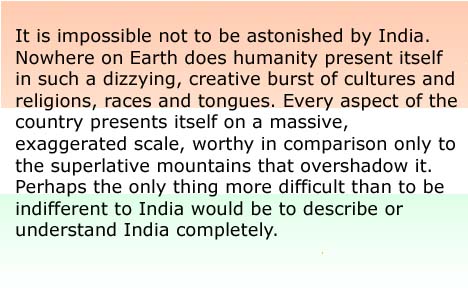


HOME | INDIA | NATURE | WILD-LIFE | HISTORY | RELIGION | EDUCATION

Government
Present day India's government is mainly based upon the British government, because of the British control over India from around1700 to the 1940's. The Indian government also adopted many of the United States' principles from the U.S. Constitution. The Indian government is divided up into three branches just like the US Government. The three branches are the Executive Branch, the Legislative Branch and the Judicial Branch.
Executive Branch: India's head of state is the president. The president is elected to a five-year renewable term. The man in succession to the presidency is the vice president. The vice president is in charge of the Parliament and conducts most of the meetings. The powers though of the president and vice president are largely nominal. The president usually acts on the advice of the Prime Minister. Though the Prime Minister has a large control over the ruling of India, the president at anytime of emergency can take over full presidential powers and act as the president and Prime Minister at once.
Legislative Branch: There are two houses of Parliament in the legislative branch. The more powerful of the two houses is called Lok Sabha in which the Prime Minister leads the ruling party and the Rajya Sabha which is lead by the vice president.
Judicial Branch: This branch's head is the Supreme Court, whose judges may serve until the age of 65. The Supreme Court of India greatly resembles the Supreme Court of the United States.
![]()